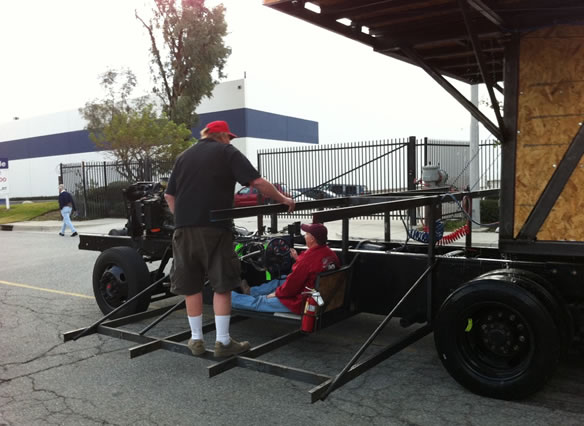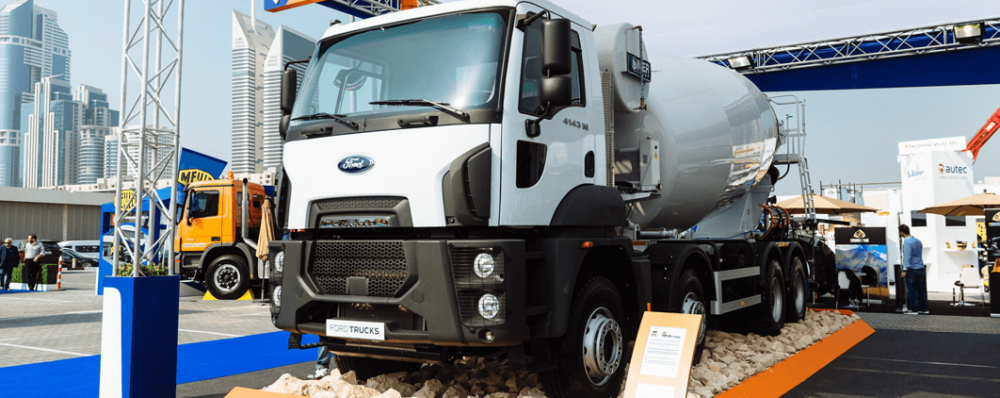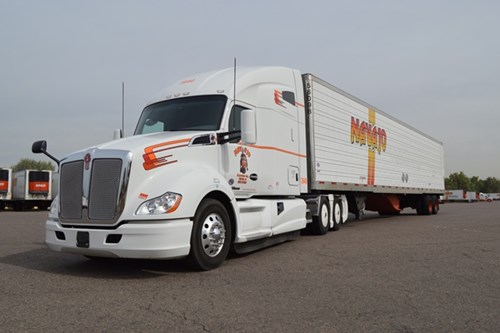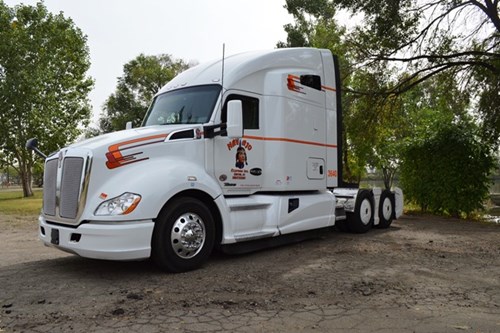
kscarbel2
Moderator-
Posts
18,914 -
Joined
-
Days Won
114
Content Type
Profiles
Forums
Gallery
Events
Blogs
BMT Wiki
Collections
Store
Everything posted by kscarbel2
-
Cummins Inc. Press Release / December 14, 2016 For the twelfth straight year, Cummins Inc. has been awarded a perfect score in the 2017 Corporate Equality Index (CEI), a national benchmarking survey and report on corporate policies and practices related to LGBT workplace equality, administered by the Human Rights Campaign (HRC) Foundation. The ratings were announced Dec. 5 by HRC, the largest U.S. civil rights organization for lesbian, gay, bisexual and transgender employees, which has more than 1.5 million members and supporters. “At Cummins, we have a long legacy of embracing the opportunities created by a diverse organization,” said Chairman and CEO Tom Linebarger. “Diversity and inclusion throughout our company allows us to attract and retain the best talent and fuels a more innovative work environment allowing Cummins to be a strong and successful company.” he HRC’s Corporate Equality Index (CEI), introduced in 2002, provides an in-depth analysis and rating of large U.S. employers and their policies and practices related to LGBT employees. Businesses are rated based on their responses to the CEI survey. The 2017 CEI rated 1,043 businesses in the report, which evaluates LGBT-related policies and practices including non-discrimination workplace protections, domestic partner benefits, transgender-inclusive health care benefits, competency programs, and public engagement with the LGBT community. Cummins efforts in satisfying all of the CEI’s criteria results in a 100 percent ranking and the designation as a Best Place to Work for LGBT Equality. .
-
Renault Trucks Press Release / December 21, 2016 Renault Trucks is furthering its corporation with the Iranian importer Arya Diesel Motors. On 21 December 2016, the parties signed two agreements in Lyon: an import agreement covering vehicules from the T, C and K ranges and an industrial cooperation agreement for the assembly of T range vehicles. On 21 December 2016 in Lyon, Bruno Blin, President of Renault Trucks and Hirbod Jenabzadeh, Board member of Arya Diesel Motors met to sign the two agreements. The first covers the import, distribution and after-sales service of the T, C and K ranges. By signing this agreement, the two parties are furthering the working partnership started in 2006. The second is an industrial cooporation agreement. The manufacturing site of Arya Diesel Motors, located 90 km south-west of Teheran, will therefore start by assembling Renault Trucks T, with industrial operations set to commence in Q3 of 2017. Prior to the 2012 embargo, this unit, which was built in 2009, assembled Renault Premium and Kerax. "Iran is an important, historic market for Renault Trucks. We are now returning to the country with strong, reliable vehicles and a high-quality partner, Arya Diesel Motors. Our ambition is to eventually achieve a 15 % market share", explained Bruno Blin, President of Renault Trucks. Arya Diesel Motors was created in 2006 to represent Renault Trucks in Iran. Arya Diesel Motors started by distributing completed vehicles before investing in a manufacturing site, located 90 km south-west of Teheran, dedicated to the assembly (SKD Semi-Knocked-Down) of Renault Kerax and Premium. The Arya Diesel Motors network has 30 sales outlets, 18 service outlets and an airplane that provides technical assistance throughout Iran. Picture: From left to right, Christophe Martin (SVP Renault Trucks International), Hirbod Jenabzadeh (Board member Arya Diesel Motors), Bruno Blin (president Renault Trucks) .
-
Bob, they assemble 155 and 195 models (known as the 300 Series in the global market), and unique to the North American market conventional cab mediums (also assembled at the Williamstown, West Virginia plant). They are assembling KD kits. Perhaps the 155/195 are SKD kits and the conventionals are CKD. http://www.hinocanada.com/WDSKmilestone_en.html
-
Freightliner Trucks Press Release / January 3, 2017 . . . . . . .
-
Hino Motors Press Release / December 23, 2016 This video is a musical tribute for the employees at their Woodstock, Ontario assembly plant, and a celebration of their commitment and dedication to producing high-quality, defect free trucks for our customers. .
-
Ford to Cancel Mexican Plant - Invest $700mm in Michigan Plant
kscarbel2 replied to General Ike's topic in Odds and Ends
Trump threatens 'big border tax' on GM over Chevy Cruze production Automotive News / January 3, 2017 President-elect Donald Trump today blasted General Motors and threatened to impose a "big border tax" for making its Chevy Cruze model in Mexico. However, the automaker reiterated that Cruzes built there will mostly go to the domestic market and that it will continue to build the compact in the U.S. "General Motors is sending Mexican made model of Chevy Cruze to U.S. car dealers-tax free across border. Make in U.S.A. or pay big border tax!" Trump said in a post this morning on Twitter. GM responded in a statement: "General Motors manufacturers the Chevrolet Cruze sedan in Lordstown, Ohio. All Chevrolet Cruze sedans sold in the U.S. are built in GM's assembly plant in Lordstown, Ohio. GM builds the Chevrolet Cruze hatchback for global markets in Mexico, with a small number sold in the U.S." In March, the automaker said it would invest $350 million to produce the next-generation Cruze at its plant in Coahuila, as part of $5 billion investment in its Mexican plants announced in 2014. At the time, GM said it will continue manufacturing the Cruze in Lordstown. However, with demand for the Cruze sedan waning, GM announced in November that the Lordstown, Ohio, plant will lose its third shift on Jan. 23. The cutback affects 1,202 hourly and 43 salaried jobs. Through the first 11 months of 2016, Cruze sales were down 18 percent. Mexico Cruze production began last year; 52,631 models were built vs. 319, 536 in the U.S. Prior to GM's March announcement, the Cruze had been imported to Mexico from the company's plant in South Korea. -
Ford to Cancel Mexican Plant - Invest $700mm in Michigan Plant
kscarbel2 replied to General Ike's topic in Odds and Ends
In effect, nothing has changed. Ford is still going to shift production of the Focus and C-Max from Wayne, Michigan to Mexico. It will now be built in an existing plant at Hermosillo rather than a new $1.6bn plant in San Luis Potosi. No Trump success story here. High volume light vehicles for the world’s second largest market should all be built in the United States, to the benefit of “our” country’s economy. Trump has threatened to slap Ford with a 35 percent tariff on any vehicles it imports from Mexico. Now Ford is still going to produce the cars in Mexico, as planned, to the benefit of Mexico’s economy, and you can safely bet that Ford will never be forced to pay a 35 percent tariff to import the cars into the United States. Rather than build the new Mexican plant, Ford said it would now invest some of that $1.6bn sum in Flat Rock, creating 700 jobs building a range of electric cars. In fact, the Flat Rock investment was already planned several years ago. Wayne is still expected to produce the global Ford Ranger and an SUV based on the Ford Everest, allegedly safeguarding 3,500 US jobs. ------------------------------------------------------------------------------------------------ Ford, following Trump criticism, cancels plans for $1.6 billion Mexico plant Automotive News / January 3, 2017 Ford Motor Co., following months of withering criticism from President-elect Donald Trump for expanding operations in Mexico, said today it will cancel its $1.6 billion assembly plant in the early stages of construction in Mexico, instead investing $700 million in Michigan to bring to market autonomous and electrified vehicles. Ford planned to build its Focus sedan in the new plant following 2018, but will instead build it at an existing Mexico plant in Hermosillo. The $700 million investment will help transform Ford’s Flat Rock Assembly Plant, which currently builds the Mustang and Lincoln Continental, into a high-tech hub capable of building a yet-to-be-determined autonomous hybrid and fully electric SUV with a 300-mile electric range. Those new vehicles are among seven new electrified vehicles Ford detailed today, including hybrid versions of its F-150 and Mustang. (Ford is two years behind its competitors in hydrid and electric vehicle design) The reversal, which came less than a year after Ford announced construction of the new plant, was hailed by lawmakers Tuesday, while Mexican officials expressed disappointment and vowed to make Ford pay back any money spent on the now-canceled plant site. Ford CEO Mark Fields called the decision a “vote of confidence” in Trump and his pro-growth policies, although he told CNBC “the main reason for not building and canceling the plant is just due to market demand.” “We’ve made this decision independently on what’s right for Ford, but we look at all the factors,” Fields told reporters at the announcement. “Our view, we see a more positive U.S. manufacturing business environment under President-elect Trump and the pro-growth policies and proposals he’s talking about.” Ford in December 2015 announced plans to invest $4.5 billion in electric car research and add 13 electrified vehicles to its lineup by 2020. Today it announced details about seven of the 13. The new fully electric small SUV will be coming by 2020 and will be built south of Detroit in Flat Rock, Michigan. It, alongside a high-volume autonomous hybrid and the hybrid version of the Mustang, will be built in Flat Rock. A Transit Custom plug-in hybrid, available in 2019, will be built in Europe; and two new pursuit-rated hybrid police vehicles will be built in Chicago. To support this, Ford plans to invest $700 million and add 700 direct new jobs in Flat Rock over the next four years. Part of that money will go to create a new Manufacturing Innovation Center in Flat Rock. Fields said the plant will become “one of the world’s most flexible and high-tech manufacturing centers." Michigan Gov. Rick Snyder, in a statement, cited the state’s push to become a national leader in mobility. He thanked Ford for its “continued confidence in our state and our people.” UAW-Ford Vice President Jimmy Settles called the investment “the equivalent of a new assembly plant.” Settles said that an unspecified number of UAW workers will move from temporary status to full-time. He expects Ford to add a third shift to Flat Rock. "It’s very significant," Settles said. "I’ve seen a lot, many peaks and valleys. This is at the top, because I know what it will mean for people at this plant and also in America." Settles said Ford chose to make its investments in Flat Rock for a combination of reasons. “It’s had very successful launches of the Mustang and Continental, and they have acreage here and they’re not at full capacity,” he said. Hiring for the 700 new jobs will begin in 2018, Fields said. Fields said Ford was “encouraged” by “pro-growth policies” Trump and the new Republican Congress are likely to pursue, citing them as one of several factors in the company’s decision to invest in the U.S. and cancel the Mexico plant. “We believe that these tax and regulatory reforms are critically important to boost U.S. competitiveness and of course drive a resurgence in American manufacturing and high-tech innovation,” Fields said. Fields cited changing market demands and slower sales of small cars as the decision to keep the Focus in Mexico. Trump has threatened to slap Ford with a 35 percent tariff on any vehicles it imports from Mexico, as well as renegotiate or pull out of the North America Free Trade Agreement (NAFTA). “Obviously, there was some disappointment [in Mexico],” Fields said. “But we’ve been in Mexico over 90 years, and we’re moving our Focus down to Hermosillo, so we’ll be safeguarding the 2,900 [Mexican] jobs that are there, plus we’ll probably add about 200 jobs when we add Focus there.” Mexico’s Economy Ministry said it regretted Ford’s decision to pull its investment from San Luis Potosi. The federal government has guaranteed that the automaker will reimburse the state government for its expenses on the project, the ministry said in a statement. It made no mention of Trump. “The growth of Ford Motor Company in North America, and particularly in Mexico, has been the result of a strategy of competitiveness based on global value chains in which North America competes with other regions of the world,” the ministry said. “The jobs generated in Mexico have contributed to maintaining manufacturing jobs in the United States [BS] that otherwise would have disappeared due to Asian competition.” The now-canceled plant was supposed to employ about 2,800 workers, Ford said when it announced the news. Fields said ground-clearing at the site began around May, but a spokeswoman said no actual construction had taken place. “Where we’re at in the construction of the plant, any assets -- and there aren’t many -- can be redeployed throughout the Ford system,” Fields said. It’s unclear how much Ford is investing in Hermosillo to add the 200 workers to build the Focus. -
Ford rebrands its U.S. commercial truck dealers
kscarbel2 replied to kscarbel2's topic in Trucking News
http://www.bigmacktrucks.com/topic/48150-titan-to-be-discontinued/?page=4#comment-356922 -
Published on December 15th, Contran (Conselho Nacional de Trânsito / National Traffic Council) Resolution 640 now authorizes the use of A-double combinations up to 91 metric tons (200,621 lb). The resolution was born from requests from the sugarcane and grain sectors. The previous rule limited A-double combinations 74 metric tons (163,142 lb). The A-double combinations will utilize two three-axle semi-trailers and a two-axle dolly. Maximum allowed overall length is to be 30 meters (98.4 feet). .
-
Ford Trucks Press Release / December 30, 2016 How do you move the world’s longest and heaviest parade float and deliver the reliability needed for one of America’s storied parades? With a highly proven truck engine known for its hauling and towing capability – Ford’s legendary 6.8-liter V10 gasoline engine. Measuring more than 125 feet long and weighing more than 137,000 pounds, the Lucy Pet Products 2017 Rose Parade float is the longest and heaviest in parade history. It features eight dogs surfing on waves generated by a one-of-a-kind mobile wave machine in a 5,000-gallon water tank. Underneath its flower-coated exterior, this record-breaking float is powered by Ford’s 6.8-liter V10 gasoline engine and heavy-duty TorqShift six-speed automatic transmission found in the company’s F-650 and F-750 medium-duty trucks. “When we set out to break the longest and heaviest single-chassis parade float GUINNESS WORLD RECORDS™ title, we knew we needed a bulletproof powertrain we could count on to reliably carry it down Colorado Boulevard for the Rose Parade,” says Joey Herrick, president and founder, Lucy Pet Products. “We’re confident that our surfing dogs, dancer JoJo Siwa, and all of our special guests are in for a smooth ride with the Built Ford Tough engine at the heart of our float.” The theme of Lucy Pet’s Gnarly Crankin’ K9 Wave Maker 2017 Rose Parade float is “beachside paradise.” Built by Fiesta Parade Floats, its centerpiece is a 5,000-gallon water tank. A portable surf machine will generate waves continuously along the parade route for eight dogs to surf. The dogs were chosen earlier this year in nationwide auditions. The float features a tiki hut, vibrant tropical fish and palm trees. A functional lifeguard stand on deck houses an actual lifeguard to direct the float driver, who is operating blind underneath it all. “Ford is proud to power the world’s longest and heaviest parade float,” says Kevin Koester, Ford medium-duty truck and Super Duty fleet marketing manager. “As the U.S. commercial vehicle sales leader for 31 years, we’ve seen a lot of applications for our vehicles – but hauling the world’s longest, heaviest parade float certainly stands out. With the broadest line of commercial vehicles available, Ford has you covered, whether you need a truck to haul soda, sand or surfing dogs.” The 6.8-liter V10 gas engine powering the Lucy Pet float came from a Ford F-650 truck. Ford is the only vehicle manufacturer to offer a gasoline-powered engine in the medium-duty truck segment. With 320 horsepower and 460 lb.-ft. of torque, the 6.8-liter V10 is available for F-650 and F-750, the biggest trucks Ford makes. Other hardworking applications for this tough powertrain include trucks used for construction, utilities, towing, beverage delivery and garbage collection. The V10 is available with a CNG/propane gaseous engine prep package for conversion to compressed natural gas or propane autogas. The Ford-built 6.7-liter Power Stroke® V8 turbo diesel is also available for F-650 and F-750. It delivers a standard best-in-class 270 horsepower and 675 lb.-ft. of torque, as well as available outputs of 300 horsepower with 700 lb.-ft. of torque and 330 horsepower with 725 lb.-ft. Ford proudly builds F-650 and F-750 medium-duty trucks at Ohio Assembly Plant in Avon Lake, Ohio. Sales of the all-new trucks are up 59 percent year-to-date through November. .
-
Ford Trucks Brazil Press Release / December 16, 2016 . . .
-
Big Rigs / December 29, 2016 Australian Mercedes-Benz truck operators have gotten a nice surprise to coincide with the release of the company's new range of trucks. The company has dropped the price on more than 10,000 parts, with some price tags coming down by 30%. Its range of remanufactured parts has also been expanded, and the price on remanufactured engines and transmissions have been reduced by 30%. Mercedes-Benz hopes the price reduction on spare parts will make the new generation Actros that much more attractive to truckies looking for a new vehicle. "We want to make the business case for our truck even better by reducing the cost of our quality parts," says Mercedes-Benz Truck & Bus Australia director Michael May.
-
Waste concept: Mack tests out Wrightspeed electric powertrain
kscarbel2 replied to kscarbel2's topic in Trucking News
This video shows the Mack LR refuse chassis being retrofitted with Wrightspeed's "Route 1000" powertrain for WasteExpo 2016. Also shown is the retrofitted Ratto Group Freightliner Condor now working in Sonoma County, California. . -
Scania Australia Press Release / December 21, 2016 Seaham, NSW-located Farragher Logistics focuses on refrigerated and fragile freight distribution, with a fleet of 15 modern Scanias ranging from a P310 rigid local delivery truck to the flagship R730 V8 prime mover, hooked up to a B-double set that covers 1100 km daily. Owner Rory Farragher is continuing the family tradition of Scania ownership, passed down from his grandfather. His devotion to Scania is not emotional: Fuel savings of $400 per week, per Scania, over his American trucks drives his bottom line profitability, and high torque engines cut trip times, leaving his drivers fresher at the end of a shift. .
-
Iveco confirms International ProStar for Australia
kscarbel2 replied to kscarbel2's topic in Trucking News
Iveco confirms ProStar arrival Trade Trucks AU / December 21, 2016 Iveco Australia has officially confirmed it will be bringing the International ProStar to Australia next year in a range of specifications. The news follows ongoing speculation, including from Trade Truck’s Steve Brooks, as to what Iveco’s parent company CNH Industrial had planned for the International brand after taking over the rights from Navistar in October. While confirming the arrival date, Iveco says the new range will include a day cab, extended cab and integrated full size sleeper cab variants and a choice of five wheelbases. "All models will be powered by an E5 Cummins X15 SCR engine producing 550hp (410kW) and 1850 lb-ft (2,508Nm) of torque, and operators will be able to select from either manual or fully automatic EATON transmissions," Iveco says. "The model mix will see the ProStar well placed to handle applications including tipper and dog work, single trailer line-haul and 34 pallet B-Double duties." While the dealer network for the brand will be unveiled in the new year, Iveco says the ProStar model range will be available in the first quarter of 2017 alongside the truck maker’s Powerstar lineup. -
Iveco Australia / December 21, 2016 The International ProStar will make its way down under in 2017, and be available in a number of different specification choices to suit a variety of local applications. On offer will be day cab, extended cab and integrated full size sleeper cab variants and a choice of five wheelbases. All models will be powered by an Euro-5 Cummins X15 SCR engine producing 550 horsepower (410 kW) and 1850 Lb Ft (2,508 Nm) of torque, and operators will be able to select from either manual or fully automatic Eaton transmissions. The model mix will see the ProStar well placed to handle applications including tipper and dog work, single trailer line-haul and 34 pallet B-Double duties. Among the options list available in the trucks will be a full multimedia system and slim line bullbar to maximise trailer set length for B-Double applications. The ProStar is expected to go on sale in the first quarter of 2017.
-
Hyundai Commercial Vehicle Press Release / December 25, 2016 .
-
Ford Trucks Press Release / December 29, 2016 Ford Trucks displayed its 2017 vocational heavy truck range at the Big 5 construction exhibition in Dubai from November 21-24. Trucks on display included model 4143M and 3543M mixers and an 1843T tractor. Powered by the new Ford Ecotorq engine family, the 2017 Construction Series now comes with greater power and more efficiency than ever to ensure customers can continue with their daunting tasks. With over fifty-five years of manufacturing expertise, Ford Trucks are tailored to meet the specific requirements of the Middle East market. Having an ambitious growth strategy and team, Ford has also announced plans for establishing a new office in Riyadh to further strengthen its presence in the region. Currently, the headquarters of Ford Trucks for the Middle East region is based in Dubai. “Offering a balanced blend of features, Ford Trucks Construction Series lands on construction sites with a single purpose; to make your project more durable and efficient,” said Emrah Duman, International Markets Director, Ford Trucks. “As a first step to expand our network with focus on retaining facility investments, we are thrilled about our upcoming office in Riyadh which will help us in further improving our service, and reduce response time to our customers.” .
-
- 1
-

-
Ford Trucks Press Release / December 20, 2016 .
-
Ford Trucks Press Release / December 20, 2016 .
-
Ford Trucks Press Release / December 20, 2016 After producing Turkey's first domestic diesel truck engine in 1986, Ford Otosan launched the 7.3-liter Ecotorq in-line six-cylinder engine in 2003. The Euro-5 emissions 9.0-liter Ecotorq was introduced in 2009. In 2016, Ford Otosan added to its Ecotorq powertrain range with a new 12.7-liter offering. Today, Ford Otosan’s 330 horsepower 9.0- and 420/480/500 horsepower 12.7-liter Ecotorq engine offerings with high pressure 2,500 bar common rail fuel injection are Euro-6 rated and Euro-7 capable. Euro-3 and Euro-5 emissions ratings are also available for country markets with lower requirements. With up to 50,000 hours of dynamometer testing, durable Ecotorq engines have a life span of over 1.5 million kilometers. .
-
Ford Trucks Press Release / December 20, 2016 Today, Ford Otosan’s Ecotorq 330 horsepower 9.0- and 420/480 horsepower 12.7-liter engine offerings with high pressure 2,500 bar common rail fuel injection are Euro-6 rated and Euro-7 capable. To meet the strict emissions standards of today and tomorrow, Ford Otosan developed the “EGAS” exhaust after-treatment system shown in the video below. .
-
Kenworth Truck Company / December 22, 2016 Serving the food and beverage industry across 48 states, Navajo Express has a well-deserved reputation for excellent service and on-time deliveries. Based in Denver, this long-time Kenworth customer stresses that any success it has achieved rests on the hard work and day-to-day commitment of its drivers. “When our drivers succeed, we all succeed,” said Navajo Express President Don Digby Jr., whose father, Don Digby Sr., founded the company 36 years ago. “By giving drivers the right equipment that won’t break down, by giving them a quality cab and sleeper where they are comfortable driving and resting, they can have success.” To help recruit and retain top drivers, Navajo began purchasing Kenworth T680 76-inch sleepers in 2014. It now operates 437 T680s with the Paccar (DAF) MX-13 engine. “The T680 with PACCAR engine has been a very good truck for us with its aerodynamic fuel efficiency and, more importantly, the comfort it provides our drivers,” said Digby. “If you want the best drivers, you better have the best equipment. For us, Kenworth was a simple choice.” Today the Navajo fleet has grown to 831 trucks, including 700 Kenworths. Navajo driver Charlie Hamilton got his new T680 about nine months ago. “It’s a smooth ride, comfortable cab and one of the quieter trucks I’ve ever driven,” said Hamilton, now in his 17th year with Navajo. “Yesterday’s run I finished at 8.2 miles per gallon* hauling 33,000 lbs. So far I’ve put 124,000 miles on the truck and have had no issues, zero downtime.” On this particular day, Digby notes, 18 trucks are down system wide. “None of them are Kenworths,” he says. “The T680s and MX-13 engine are proven reliable.” So much so that Navajo will be purchasing up to 225 additional Kenworth T680s in 2017. Digby especially appreciates the power, performance, fuel efficiency and reliability of the MX-13 engine. “Our drivers prefer the MX-13 engine because it’s considerably quieter,” said Digby. “They’re standing in line waiting for the MX-13.” Navajo specs its T680s with many additional driver-friendly features like the Bendix Wingman Advanced system that delivers adaptive cruise control with braking features along with collision mitigation technology that can help drivers in collisions, potential rollovers, and loss-of-control situations. “We believe the T680 is the best truck on the road with features like the automatic-unlocking fifth wheel to limit the exposure of the driver’s rotator cuff,” said Digby. “These things are important to us and to our drivers.” When it comes time to spec new trucks, Navajo looks to its dealer, MHC Kenworth – Denver, for assistance. “We like to try new things, the latest and greatest in terms of driver comfort,” said Digby. “MHC is a true partner at bringing new ideas and new visions to the table. Plus, MHC Kenworth blankets the United States with coverage and is really able to help our drivers with any situation.” Hamilton added, “I haven’t been inside a dealer since I got my T680. It runs really well, smooth and quiet, and no downtime.” Kenworth is the driver’s truck for comfort and reliability. Concluded Digby, “We give our drivers the best piece of equipment on the road, to make sure they can achieve success. At the end of the day, they want to drive Kenworth.” .
BigMackTrucks.com
BigMackTrucks.com is a support forum for antique, classic and modern Mack Trucks! The forum is owned and maintained by Watt's Truck Center, Inc. an independent, full service Mack dealer. The forums are not affiliated with Mack Trucks, Inc.
Our Vendors and Advertisers
Thank you for your support!








